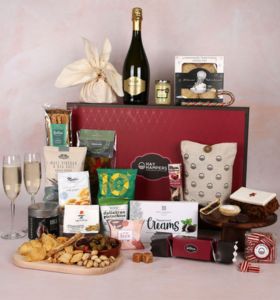Afternoon tea is a quintessentially British tradition that allows us to indulge in delightful treats and conversations. However, knowing the proper etiquette can make this experience even more enjoyable. Here are 30 afternoon tea etiquette rules to remember for your next gathering.
1. Dress Appropriately
Afternoon tea is not a formal event, but it’s not informal either. Opt for smart-casual attire, like a skater dress or a classy blazer.
2. Gentlemen, Wear a Jacket
A jacket is always appropriate for men attending afternoon tea.
3. Be Prepared for a Variety of Teas
Afternoon tea will often offer an array of teas, including black, white, and green. Coffee, however, is not served.
4. Table Setup
The table will be immaculately set with delicate crockery, a napkin, cutlery, a plate, a cup and saucer, a tea strainer, sugar, cold milk, and lemon slices.
5. Designate a Tea Pourer
One person should be designated to pour tea for everyone, usually the guest of honor or the host.
6. Loose Leaf Tea Etiquette
Afternoon tea is served with loose-leaf tea, not tea bags. Use the provided tea strainer to avoid loose leaves in your cup.
7. Green and White Tea Protocol
Green and white teas should be served plain, without lemon, sugar, or milk.
8. Respect the Tea’s Flavors
Adding condiments to expensive, seasonal teas can mask their rich flavors. Enjoy them as they are.
9. Serving Tea
When serving tea, ask each guest if they want any additions, such as milk, sugar, or lemon. Add sugar first, followed by milk or lemon.
10. The Food
Food will be served on a three-tiered rack with sandwiches on the bottom, scones in the middle, and miniature desserts on the top.
11. Sandwich Etiquette
Use your knife and fork to cut finger sandwiches in half. Never tear them apart or eat them whole with your knife and fork.
12. Pace Yourself
Allow everyone to finish their sandwiches before moving on to scones and desserts. Afternoon tea is about enjoying the company and the experience.
13. Napkin Etiquette
Place the provided cotton napkin in a triangle on your lap with the opening towards you. This allows you to dab your mouth and hide any stains discreetly.
14. Tea Pouring
Place the strainer over your cup and pour the tea gently. This prevents loose leaves from entering your cup and making the tea bitter.
15. Adding Sugar
Place sugar cubes gently by the side of the cup to avoid splashing and noise.
16. Stirring Tea
Stir the tea from 12 to 6 on a clock face in a back-and-forth motion. Avoid stirring in a circular motion.
17. Adding Milk
If adding milk, fill your cup three-quarters of the way with tea to leave room for the milk.
18. Drinking Tea
Bring the tea towards you and drink, looking inside the cup rather than in front of you.
19. Holding Your Cup
Place your index finger inside the handle and use your other three fingers to support the cup.
20. Scone Etiquette
Break scones in half by hand, not with a knife.

afternoon tea food
21. Condiments
Serve clotted cream and jam with scones, scooping them onto
your plate first, then apply them to your scone using a knife.
22. The Cream vs. Jam Debate
The age-old debate of whether to apply cream or jam first is a matter of regional preference. In Cornwall, it’s jam first, while in Devon, it’s cream first.
23. Eating Scones
Eat scones one half at a time, not as a sandwich.
24. Dessert Etiquette
Use a small dessert fork or spoon to eat delicate desserts.
25. Conversation
Engage in light, polite conversation during afternoon tea. Avoid controversial or sensitive topics.
26. Tea Tasting
If you are unfamiliar with a particular tea, asking for a taste before committing to a full cup is acceptable.
27. Mobile Phones
Keep mobile phones silent and out of sight during afternoon tea to maintain a serene atmosphere.
28. Reaching for Items
Ask for assistance when reaching for items that are not easily accessible rather than leaning across the table.
29. Leaving the Table
If you must excuse yourself from the table, place your napkin on your chair, not the table.
30. Ending the Tea
Once the tea is over, thank your host and compliment them on the beautiful experience.
Following these 30-afternoon tea etiquette rules will make every occasion feel extra special. Enjoy this beloved British tradition’s delightful treats, pleasant company, and timeless charm.
Frequently Asked Questions
Below are some frequently asked questions about afternoon tea etiquette to help you feel even more confident and prepared for your next tea outing.
What should I wear for afternoon tea?
A: Dressing up for afternoon tea is part of the fun, so choose smart-casual attire. A dress, skirt, blouse, or an intelligent pants outfit are appropriate for women. For men, slacks and a button-down or polo shirt will do. Avoid jeans, shorts, and sneakers.
How do I hold my teacup properly?
A: To hold your teacup correctly, pinch the handle with your thumb and index finger while resting your middle finger underneath. Hold the saucer with your other hand if you’re standing.
Is it acceptable to add sugar and milk to my tea?
A: Yes, you can add sugar and milk to your tea according to your preference. However, traditional afternoon tea usually features black tea without milk.
Can I request a different type of tea?
A: Most afternoon tea venues offer a variety of teas to choose from. Don’t hesitate to ask for a different tea if you prefer something other than the standard selection.
What if I have dietary restrictions or allergies?
A: Inform your host or the venue about your dietary restrictions or allergies. They should be able to accommodate your needs.
Can I take leftovers home?
A: While taking leftovers home from afternoon tea is not traditional, some venues may offer to box up uneaten treats. It’s best to follow the lead of your host or the forum.
Is it necessary to tip at an afternoon tea venue?
A: A gratuity is usually appreciated for the service provided during afternoon tea. Check the specific venue’s tipping policy or ask your host for guidance.
Remember, the most critical aspect of afternoon tea etiquette is to enjoy the experience and make lasting memories with friends and loved ones. Keep these FAQs in mind, and you’ll be sure to have a delightful time.
Craig Sandeman, the Gift Giving Guru, is a passionate writer and dedicated website curator. When he’s not crafting engaging content or maintaining his online platform, you can find him exploring the Mediterranean seas, indulging in his love for island hoping. With his expertise in gift-giving and his adventurous spirit, Craig is always seeking new ways to inspire and delight others with thoughtful presents and memorable experiences.







